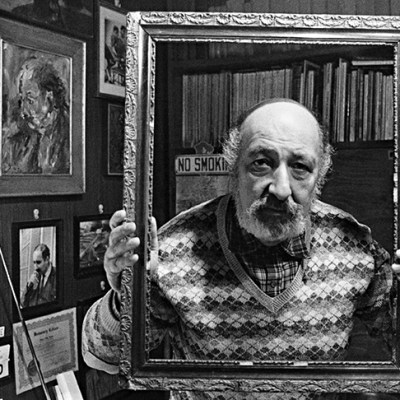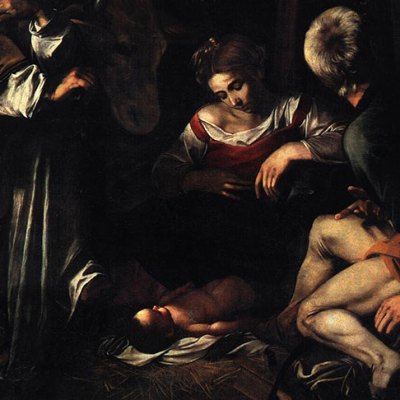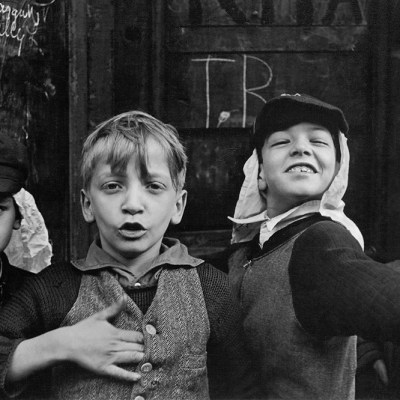There is no better introduction to Letizia Battaglia, the subject of a stirring new exhibition at the Photographers’ Gallery in London, than the categories she created for the index cards to her library of images: ‘Arrests’, ‘State police’ and ‘Widows and relatives of the murdered’ should give you a flavour. In the late 1970s and ’80s, these were an everyday reality in Palermo, Sicily, where Battaglia worked for the city’s afternoon newspaper, L’Ora, as head of its photography department but also, principally, as a photojournalist.
The arrest of the ferocious Mafia boss Leoluca Bagarella, Palermo, 1979. © Courtesy Archivio Letizia Battaglia
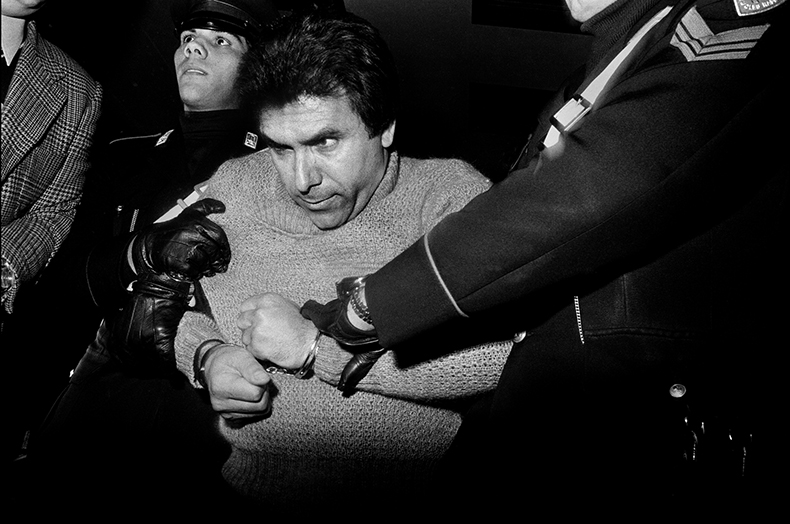
Those decades were a grim and exceptionally bloody chapter in the so-called Mafia wars, when rival clans seeking the top spot slaughtered thousands of people. Not just the bosses, their families and henchmen, but swathes of police officers, prosecutors, judges and government officials and a good many ordinary people who just happened to be in the wrong place at the wrong time.
Battaglia – whose name fittingly means ‘battle’ – went after her subject like a terrier. She documented every bullet-pulped brain, every shattered life, every belligerent stare. Such tenacity earned her several death threats, one of which – crumpled, typed in brutish capitals – is framed on the gallery wall. ‘You no longer knew who your friends or enemies were,’ she said. ‘You left the house in the morning and didn’t know if you would come back in the evening.’
Born in Palermo in 1935, Battaglia ran away from home at 16 and fell into photography in the early 1970s. She was self-taught, and perhaps because of that developed her own, visionary fusion of form and feeling. Photographing in up-close, off-the-cuff style – ‘at the distance of a punch or a caress’, as she memorably described it – her images were intense and uncomfortable, though still somehow beautiful. She approached the mess of death poetically, capturing a corpse from an acute angle, for instance, or glittering under the midday sun.
He was killed on his way to the garage to get his car. Palermo, 1976. © Courtesy Archivio Letizia Battaglia
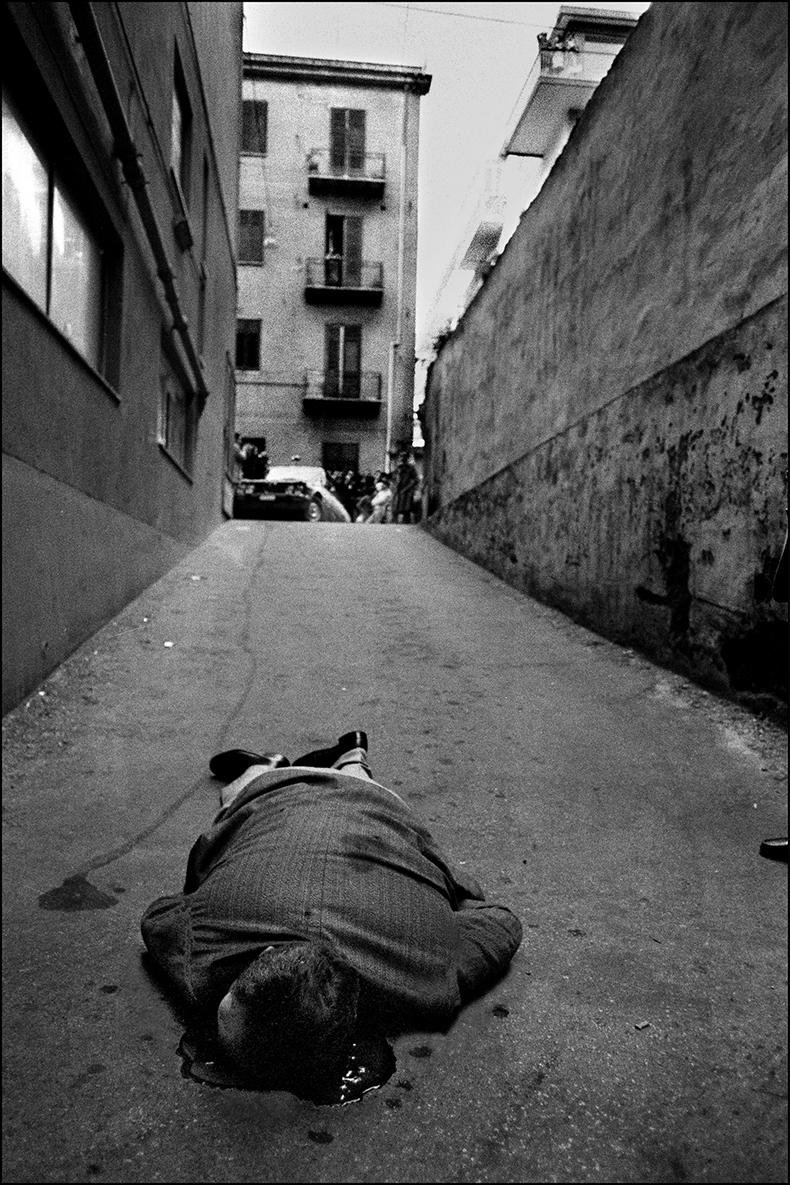
Startling pictures like these, which lure you in then abandon you to their psychological complexities, come at you from every side in this exhibition. Covering 50 years, it shines equal light on the pictures Battaglia made of her fellow Palermitani. A child in her Sunday finery caught in a shaft of light; exuberant May Day celebrations at the city’s Parco della Favorita; the well-to-do crowd clad in brooches and furs drifting through gilt and chandeliered drawing rooms.
Many of the photographs are displayed with their original captions, making them all the more immediate: ‘San Giusto celebration, the horse broke a leg during the race, it will be put down later today. Meanwhile the race continues’ (Misilmeri 1981). And: ‘He stole copper from electricity manholes to feed his children. He died accidentally from electrocution’ (Palermo 1976).
Near the Church of Santa Chiara. The killer’s game. Palermo, 1982. © Courtesy Archivio Letizia Battaglia
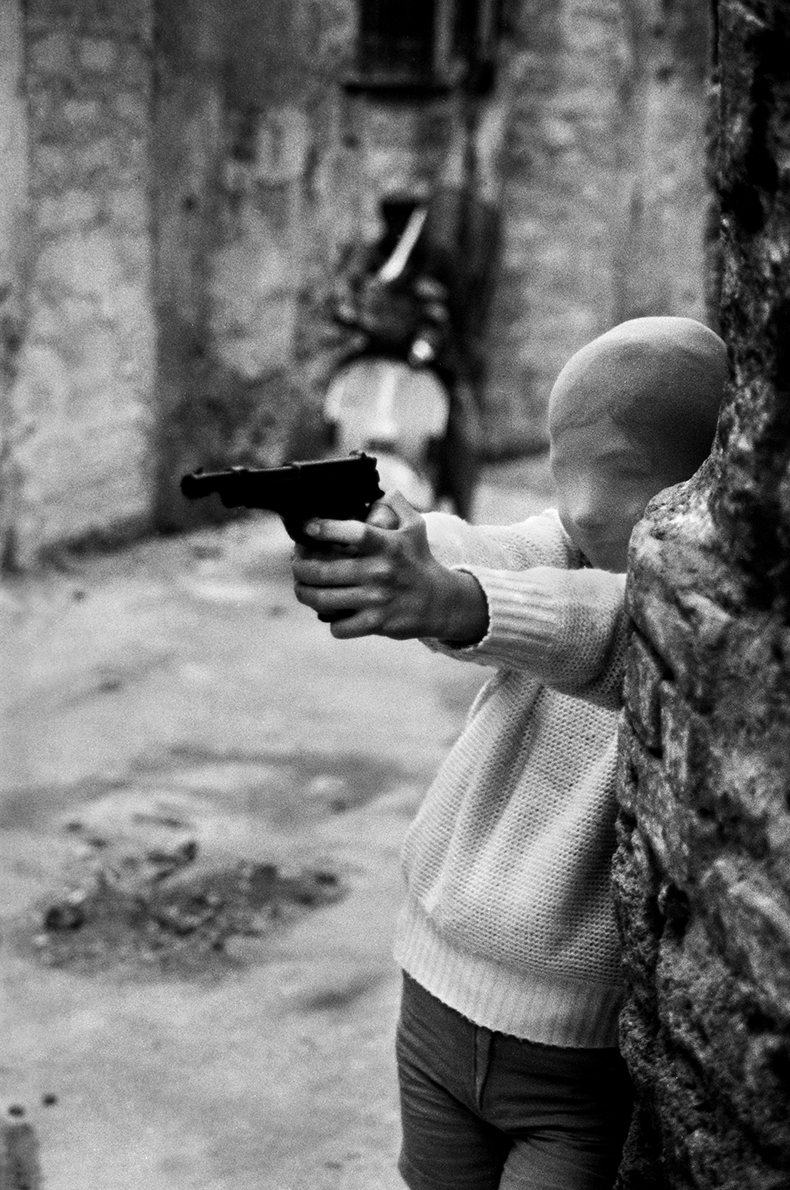
Palermo – picturesque, shabby, sculptural – is an insistent presence. In the 1970s, the city was still bruised by the Second World War, both architecturally and economically. Cracked and shattered plaster, stained walls, homes without water and electricity, a mother so tired she failed to wake when a rat gnawed away her baby’s finger, a son watching over his sick father in the poor house. Battaglia stumbled, consumed, from one horror to the next.
The exhibition continues on the floor below, where Battaglia’s photographs are suspended in rows from the ceiling, ‘forest’ style – a technique she first trialled in 2015 to encourage viewers to forge their own way through the images, and so form their own connections between them. The experience of being inside it takes a little getting used to, but once you settle, has a fascinating effect. While you are looking at one photograph, shards of other ones are visible in the corner of your eye, and I imagine when the room is full of people, it could feel like a hall of mirrors or a maze – a place to be navigated, though there is no ‘right’ way of doing so.
Boss Gaetano Fidanzati in court, Palermo, 1978. © Courtesy Archivio Letizia Battaglia
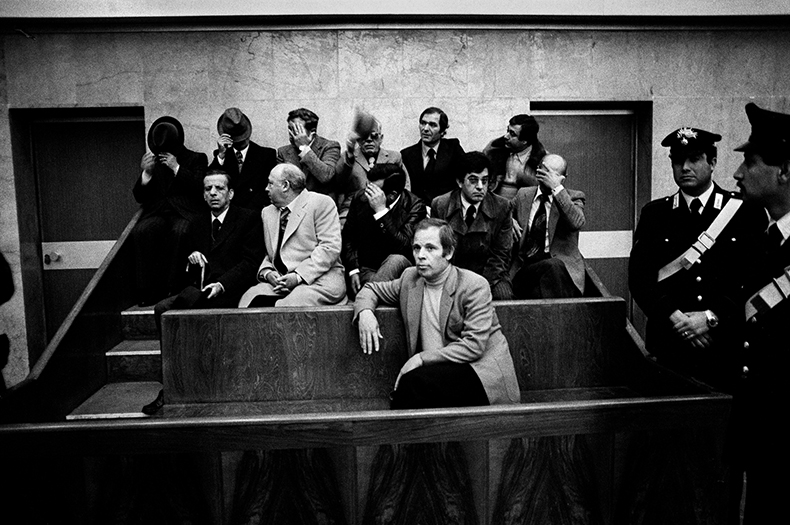
All of that is much helped by the soundscape leaking from a documentary about Battaglia that is playing in a far corner of the room: something sacred one minute, something discordant the next, a burst of something cool and ’70s, interspersed with staccato snatches of Italian conversation. I doubt it was intentional but it conveys beautifully the raucous chaos that seems to have been Battaglia’s lifeblood. ‘Palermo, a crazy place?’ you hear her say at one point. ‘I would like it to be crazier.’
‘Letizia Battaglia: Life, Love and Death in Sicily’ is at the Photographers’ Gallery, London, until 23 February.

